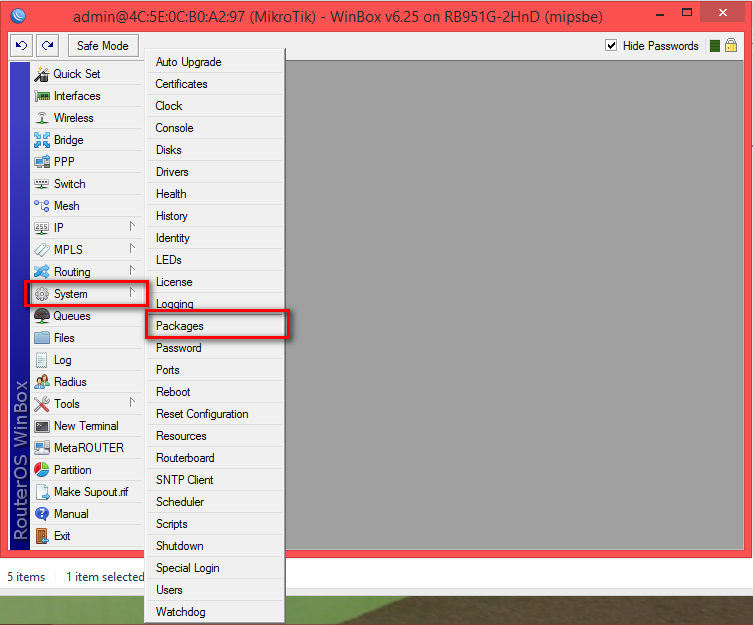

- #How to disable ipv6 on mac for mac#
- #How to disable ipv6 on mac update#
- #How to disable ipv6 on mac windows 10#
- #How to disable ipv6 on mac mac#

Hopefully this is read an picked up on to investigate. I am no Citrix customer myself, just a user. Maybe this happens in conjuction with existing bugs in Citrix for Mac, because I have read in the link below, in previous versions, these kind of bugs were there, and were solved:Īpparently this is an unsolved bug, or something else. My suspicion is that is must have something to do with the ipv4/ipv6 implementation of my ISP (the largest in the Netherlands), because when connected through my iPhone by hotspot, I have no connection problems. This organisation is not on ipv6, they have confirmed to me. The urls I am trying to connect to are all configured with ipv4. The only way to get connection is to turn off ipv6 in macOS System Preferences > Network > Advanced > Configure ipv6 > link-local only. When clicking on the Desktop icon, I get "Cannot Connect To Server" errors. Just like the topic opener, I can login to Netscaler Gateway and I see the desktop icons. I don't have any other problems with my connection or router or ISP ever. Through the router of my ISP (Ziggo, in the Netherlands), I have both ipv4 and ipv6.Īttached to this message is a screenshot from, to show my ipv6 connection is healthy. I am using Citrix Receiver 12.8.1 for mac, with Netscaler Gateway 3.1.6, on a MacPro with High Sierra 10.13.2. Is Receiver obtaining the host name from a DNS lookup and because IPv6 is the preferred stack, it is returning the v6 record instead of the v4 that it should be using? However I would have still expected that in a dual stack situation that Receiver would have a mechanism to ensure that its using the same IPv4 proxy that the original session was established with on the Netscaler. Now I'm sure the simple solution is to either remove the IPv6 AAAA record or enable the IPv6 VIP on the Netscaler. The IPv6 VIP is not enabled at the moment.

We have both A (IPv4) and AAAA (IPv6) records in DNS for but only the IPv4 VIP is live on our Netscaler.
#How to disable ipv6 on mac mac#
From the failed IPv6 enabled Mac Receiver log above I see the following: However, I have a theory as to what could be happening.
#How to disable ipv6 on mac windows 10#
I tried to reproduce the issue on my Windows 10 machine with IPv6/IPv4 dual stack through both my Verizon LTE and Comcast and was unable to do so. This was the first instance I've ever seen this problem on Windows. I had him disable the IPv6 stack on the machine, and he was then able to launch the app successfully. He was getting an error "secure ticket authority cannot be contacted" when attempting to launch an app through Receiver 12.4 for Windows.
#How to disable ipv6 on mac update#
UPDATE - So this weekend I had a customer on Comcast who was on a Windows 10 machine in an IPv6/IPv4 configuration. Any idea why this issue would occur on a dual-stack iPv4/iPv6 Mac client but not on a Windows client? It seems to me that the browser is doing the initial connection on iPv4 as it should but something is going wrong with Receiver when it attempts to receive a ticket from the STA. We do not have iPv6 enabled on our Netscaler VIPs, StoreFront or on our XenApp hosts. Our environment is Netscaler 10.5 61.11.nc. The user is able to login through the Netscaler portal and reach the StoreFront but when attempting to launch applications received the following error "Cannot Connect To Server: xxxxxxSTAxxxxxxxx" Setting the TCP/IP parameters on the machine to only issue a link-local iPv6 address resolved the issue. The particular user we had today was a using the latest MacOS with Receiver 12.4 and Comcast ISP. It seems that many ISPs are now implementing consumer routers that issue both iPv4 and iPv6 addresses.
#How to disable ipv6 on mac for mac#
We're run across an issue with Receiver for Mac where users cannot connect to our XenApp 6.5 farm if they have iPv6 enabled and are configured for a IPv4 and IPv6 dual stack scenario.


 0 kommentar(er)
0 kommentar(er)
